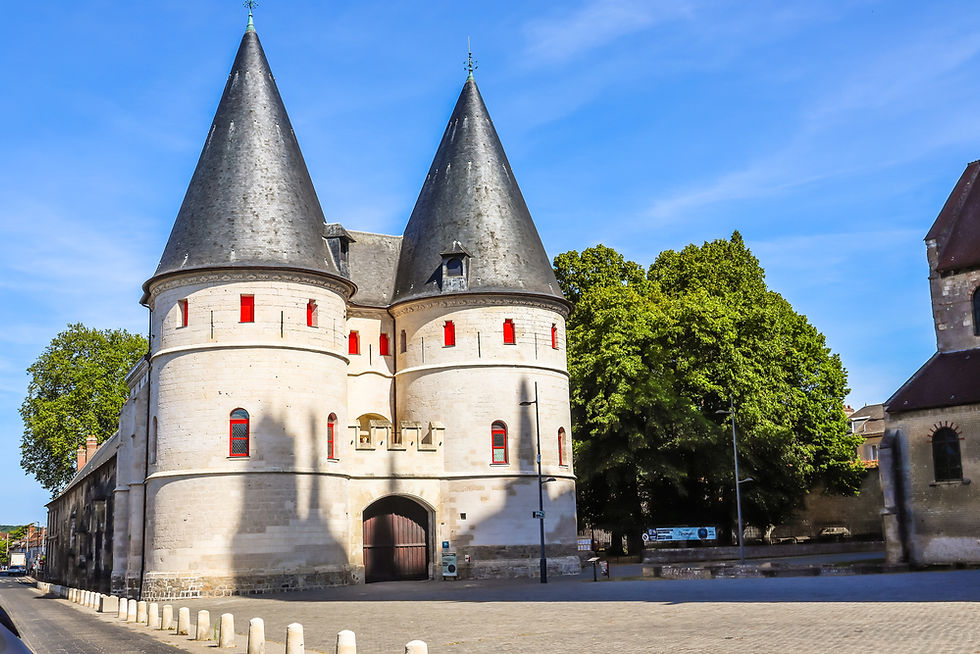Running in Beauvais: in the heart of the Oise
- audreyubertino
- Jul 20, 2022
- 3 min read
In the Hauts-de-France region and only a few kilometers north of the Paris basin, Beauvais is mainly appreciated by tourists for its historical and architectural heritage. Labeled a City of Art and History in 2012, Beauvais invites visitors to explore nearly 2,000 years of history, from the ancient ramparts to the City Hall and of course its exceptional cathedral. The JOOKS application takes you to discover the prefecture of Oise thanks to the audio-guided tours offered by the city!

Beauvais was born in the 1st century A.D. It is then a Roman camp known under the name of Caesaromagus, "the market of Caesar". It was later renamed Civitas Bellovacorum, the "city of the Bellovacs", which is the origin of its current name. But it is in the Middle Ages that the city develops and knows an important economic development, in particular thanks to the textile industry. At the time, the craftsmen work all kinds of wools and the cloth of Beauvais is exported as far as the East.
City of history...
It is in the 13th century that the famous cathedral Saint-Pierre de Beauvais was built, masterpiece of the Gothic art remained unfinished, which has the highest Gothic choir in the world (48.50 meters). During your walk, do not hesitate to push the doors of the cathedral to admire the magnificent stained glass windows and especially the splendid astronomical clock, created by Auguste-Lucien Vérité in the 19th century.

A little away from the historic city center is an almost unique example in France of medieval hospital architecture. The maladrerie Saint-Lazare is a former leprosarium dating from the 12th century, classified as a historical monument. Several buildings have been preserved and some of them are open to visitors, notably the barn which has been magnificently restored.
If the First World War has relatively spared the architectural heritage of the city, it is otherwise of the Second World War. Indeed, from the beginning of the conflict, Beauvais is bombed by the German aviation, which will cause a huge fire. 80% of the city center is destroyed, the town has lost almost all the vestiges of its past. A reconstruction plan is launched in the wake, which tries to integrate the heritage preserved while modernizing the city.
While running or walking in the center of Beauvais, you will also be able to admire the half-timbered and cob houses that still line some streets, survivors of the German bombings. The oldest of these houses dates back to 1410 and is located a few steps from the cathedral, in the voie des Chasse-Marée.
...and art.
Installed in the former episcopal palace, residence of the bishop-counts of Beauvais, the MUDO-Musée de l'Oise was created in the middle of the 19th century. The architectural ensemble, classified as a historical monument, is composed of several buildings dating from the 12th to the 16th centuries. You will notice in particular its impressive fortified entrance, flanked by two twin towers. The Musée départemental de l'Oise houses a varied collection, ranging from archaeological objects to the different trends in 19th century painting. It also highlights the talents and know-how of the department.

The most remarkable of these skills is undoubtedly the tapestry, which made the fame of the city for several centuries. The workshops of the manufacture were destroyed during the bombardments of 1940 but, after being transferred to Paris for a few years, they returned to Beauvais at the end of the 1980s. The factory reached its peak in the 18th century. The quality of its production was equivalent to that of the Gobelins factory in Paris.
In homage to the royal tapestry factory that was once Beauvais, the National Tapestry Gallery opened in 1976, on the initiative of André Malraux. Renamed the Quadrilateral in 2016, the place presents a superb collection of tapestries, antique furniture and paintings.
Beauvais, nature-wise

Built on the site of a former sand and gravel quarry, the Canada artificial lake is an oasis of tranquility and greenery. With its 45 hectares, the water sports base offers a wide variety of sports and leisure activities: kayaking, pedal boats, tree climbing, swimming, fishing... More than 3 kilometers of trails and paths are also available for walkers, runners and cyclists.
The Canada artificial lake has been selected, along with three other sites in the city of Beauvais, as a preparation center for the Paris Olympic Games as part of the « Terre de Jeux 2024 » label. The water sports base is indeed more than qualified for the practice of outdoor sports and is also ideally located, only a few kilometers from the Jules Ladoumègue stadium and the Aquaspace, but also from the future Olympic village.
Find all the routes of the city of Beauvais on the JOOKS application.
Run, walk or cycle with JOOKS, from the Saint-Pierre cathedral to the Oise Museum!



Comments